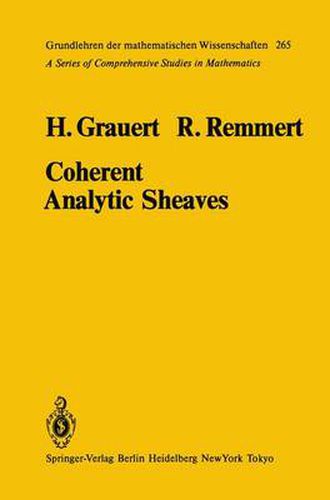Readings Newsletter
Become a Readings Member to make your shopping experience even easier.
Sign in or sign up for free!
You’re not far away from qualifying for FREE standard shipping within Australia
You’ve qualified for FREE standard shipping within Australia
The cart is loading…






This title is printed to order. This book may have been self-published. If so, we cannot guarantee the quality of the content. In the main most books will have gone through the editing process however some may not. We therefore suggest that you be aware of this before ordering this book. If in doubt check either the author or publisher’s details as we are unable to accept any returns unless they are faulty. Please contact us if you have any questions.
…Je mehr ich tiber die Principien der Functionentheorie nachdenke - und ich thue dies unablassig -, urn so fester wird meine Uberzeugung, dass diese auf dem Fundamente algebraischer Wahrheiten aufgebaut werden muss (WEIERSTRASS, Glaubensbekenntnis 1875, Math. Werke II, p. 235). 1. Sheaf Theory is a general tool for handling questions which involve local solutions and global patching. La notion de faisceau s'introduit parce qu'il s'agit de passer de donnees ‘locales’ a l'etude de proprietes ‘globales’ [CAR], p. 622. The methods of sheaf theory are algebraic. The notion of a sheaf was first introduced in 1946 by J. LERAY in a short note Eanneau d'homologie d'une representation, C. R. Acad. Sci. 222, 1366-68. Of course sheaves had occurred implicitly much earlier in mathematics. The Monogene analytische Functionen , which K. WEIERSTRASS glued together from Func- tionselemente durch analytische Fortsetzung , are simply the connected components of the sheaf of germs of holomorphic functions on a RIEMANN surface*‘; and the ideaux de domaines indetermines , basic in the work of K. OKA since 1948 (cf. [OKA], p. 84, 107), are just sheaves of ideals of germs of holomorphic functions. Highly original contributions to mathematics are usually not appreciated at first. Fortunately H. CARTAN immediately realized the great importance of LERAY’S new abstract concept of a sheaf. In the polycopied notes of his Semina ire at the E. N. S.
$9.00 standard shipping within Australia
FREE standard shipping within Australia for orders over $100.00
Express & International shipping calculated at checkout
This title is printed to order. This book may have been self-published. If so, we cannot guarantee the quality of the content. In the main most books will have gone through the editing process however some may not. We therefore suggest that you be aware of this before ordering this book. If in doubt check either the author or publisher’s details as we are unable to accept any returns unless they are faulty. Please contact us if you have any questions.
…Je mehr ich tiber die Principien der Functionentheorie nachdenke - und ich thue dies unablassig -, urn so fester wird meine Uberzeugung, dass diese auf dem Fundamente algebraischer Wahrheiten aufgebaut werden muss (WEIERSTRASS, Glaubensbekenntnis 1875, Math. Werke II, p. 235). 1. Sheaf Theory is a general tool for handling questions which involve local solutions and global patching. La notion de faisceau s'introduit parce qu'il s'agit de passer de donnees ‘locales’ a l'etude de proprietes ‘globales’ [CAR], p. 622. The methods of sheaf theory are algebraic. The notion of a sheaf was first introduced in 1946 by J. LERAY in a short note Eanneau d'homologie d'une representation, C. R. Acad. Sci. 222, 1366-68. Of course sheaves had occurred implicitly much earlier in mathematics. The Monogene analytische Functionen , which K. WEIERSTRASS glued together from Func- tionselemente durch analytische Fortsetzung , are simply the connected components of the sheaf of germs of holomorphic functions on a RIEMANN surface*‘; and the ideaux de domaines indetermines , basic in the work of K. OKA since 1948 (cf. [OKA], p. 84, 107), are just sheaves of ideals of germs of holomorphic functions. Highly original contributions to mathematics are usually not appreciated at first. Fortunately H. CARTAN immediately realized the great importance of LERAY’S new abstract concept of a sheaf. In the polycopied notes of his Semina ire at the E. N. S.